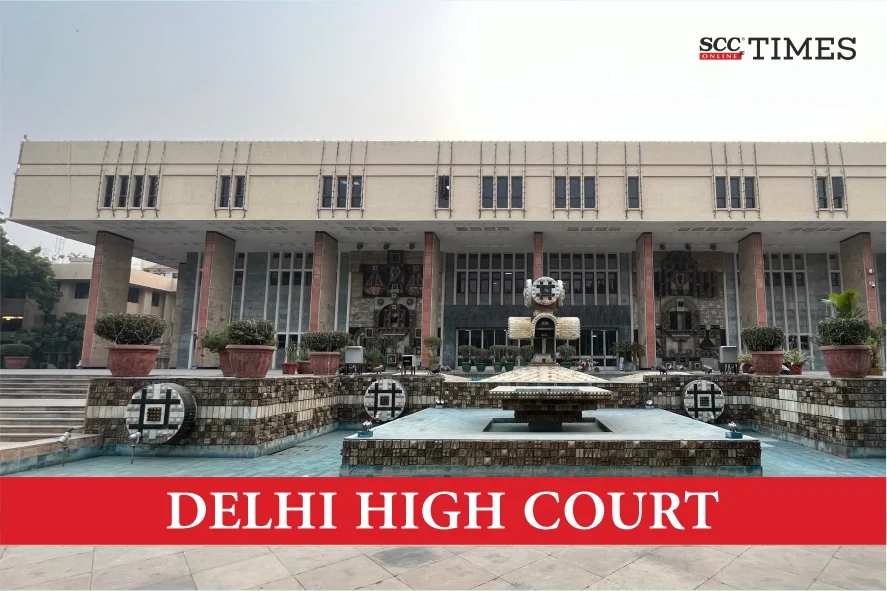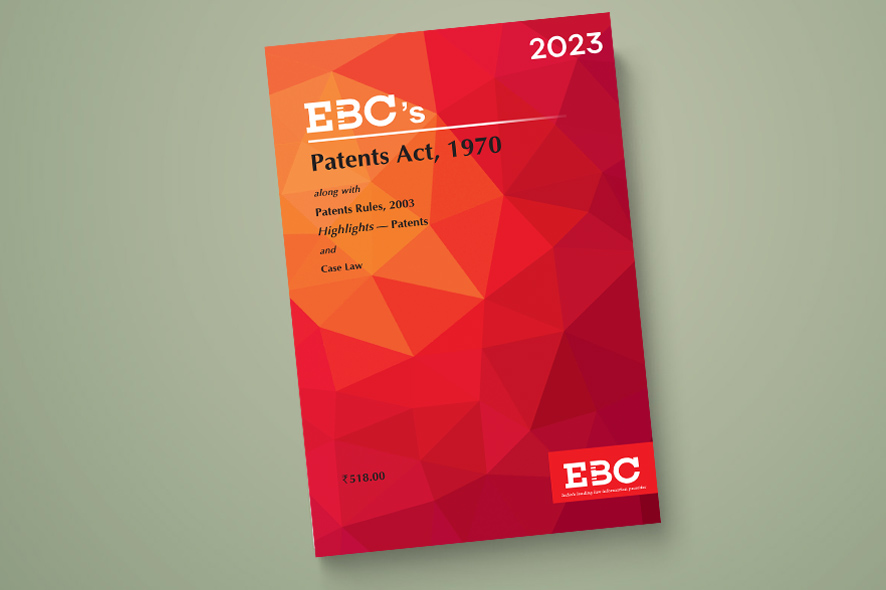Delhi High Court: In an appeal filed under Section 117-A of the Patents Act, 1970 (‘the Act’) challenging the order dated 31-08-2021, Prathiba M. Singh, J.*, referred to Section 59(1) of the Act and opined that the amended claim had to be within the amended scope of unamended claims and within the complete specification. However, in the present case, the omission of the disease’s name in amended claim expanded the scope within which the composition could be applied, and therefore the amended claim expanded the scope of the subject. The Court opined that in the present case, the field of description clearly described that this method and composition was to be used for the purpose of treating secondary insomnia and the fact that the medical condition was not written in the amended claims showed that the same went beyond the specification. Thus, the Court opined that the appeal was bereft of merit and the patent was not liable to be granted, both due to expansion of the scope of the Claims and also under non-patentability under Section 3(d) of the Act, as there was not enough data to demonstrate significant enhancement of therapeutic efficacy, and accordingly dismissed the present appeal.
Background
In the present case, the Patent Cooperation Treaty (‘PCT’) application titled ‘Methods of increasing tonic inhibition and treating secondary insomnia’ was filed with the international filing date of 03-06-2015, and the said patent application was filed as National Phase Application, before the Indian Patent Office on 02-01-2017. The complete specification in the national phase application and the summary of the invention specified that the patent application was related to pharmaceutical composition designed to increase inhibition of neurons, with a focus on treating various medical conditions, particularly Fragile X syndrome and Angelman syndrome.
The appellant filed the request for examination of the subject patent application on 18-05-2018, and in response to such request, the Controller issued a First Examination Report (‘FER’) with a statement of objections on 16-08-2019. The objections raised by the Controller were of lack of novelty, inventive step and non-patentability under Section 3(i) and Section 3(e) of the Act. It was also stated that the claimed composition was obtained by a mere admixture resulting only in an aggregation of the properties of the components without any synergistic effect, thereby attracting the objection under Section 3(e) of the Act. Further, the ground of insufficiency of disclosure and definitiveness in the claims, in violation of the requirements under Sections 10(4)(c) and 10(5) of the Act were also raised by the Controller in the FER.
Subsequently, the appellant filed a response dated 13-02-2020, by which the appellant amended the claims of the subject patent and limited the present invention to ‘a composition’. It was stated that by the amendment, the appellant clarified the composition of 0.05 mg to about 30 mg of gaboxadol or a pharmaceutically acceptable salt with the said composition. After the careful perusal of the reply, the Controller gave a hearing notice, which was scheduled on 02-11-2020. Further, regarding the grounds of lack of novelty and inventive step, the appellant relied on the declaration by the inventor of the subject patent application, to prove synergistic effect of the ingredients, and in respect of the grounds of insufficiency of disclosure under Section 10(4) of the Act, the appellant submitted that the amended set of claims had been provided.
Thereafter, the Controller after considering the appellant’s submission refused the subject patent application under Section 15 of the Act on the following grounds:
a. the amended claims were not supported by the description as the initial Claims were method Claims but the final Claims are composition Claims, and the amended Claims 1-8 did not fall within the scope of the originally filed Claims;
b. the amended Claims were not inventive;
c. the Claims were affected by both Section 3(d) and Section 3(e) of the Act, since the composition had not been disclosed and merely a reference to the compound already documented in prior arts had been made.
Thus, the appellant filed the present appeal under Section 117A of the Act.
Analysis, Law, and Decision
The Court noted that in the detailed description of the invention in the subject patent application, it had been acknowledged that THIP and Gaboxadol were known in the art and opined that complete specification itself acknowledged that THIP and gaboxadol were known prior to the filing of the present patent application.
On considering the objection raised by the Controller that whether the amended claims were within the scope of original claims, the Court observed that there were three major differences between the originally filed Claim 1 and the amended claim 1. Firstly, the amended claim omitted the limitation and reference to the specific disease for which the composition was intended. Secondly, the amended claim pertained to a composition claim, while the initially filed claim related to a method and composition claim. Thirdly, the amended claim specified the range of Gaboxadol that was to be used. The Court referred to Section 59(1) of the Act and opined that the amended claim had to be within the amended scope of unamended claims and within the complete specification. However, in the present case, the omission of the disease’s name in amended claim expanded the scope within which the composition could be applied, and therefore the amended claim 1 expanded the scope of the subject.
The Court opined that in the present case, the field of description clearly described that this method and composition was to be used for the purpose of treating secondary insomnia and the fact that the medical condition was not written in the amended claims showed that the same went beyond the specification. Further, with respect to the third difference, the Court relied on Nippon A&L Inc. v. Controller of Patents, 2022 SCC OnLine Del 1909 and opined that while the amended Claim had disclaimed the earlier broadly claimed feature by defining the necessary amount of composition to be used, the amended Claim was not within the scope of the originally filed Claims as the limitation with respect to a specific class of diseases was removed. Thus, the scope of claims before the Court at the stage of appeal was broader than the originally filed claims.
Further, regarding the issue that whether the claimed composition resulted in enhanced therapeutic efficacy, the Court opined that even if the Court permitted the appellant to reintroduce the limitation in Claim 1 in respect of neurodegenerative diseases, the amended Claim would still be hit by non-patentability under Section 3(d) of the Act and enhanced therapeutic efficacy would have to be established to overcome the said refusal. The Court opined that generally, the complete specification of the patent application, ought to contain the requisite data or references to the requisite data or even results of lab experiments which demonstrated enhancement of efficacy of the subject invention for which patent was sought. However, if there was any additional data, such as data from Clinical Trials which became available, only post the filing of the patent application, such data might be considered by the patent office and the Court.
The Court opined that undoubtedly, in the present case, the composition was at best a derivative and would be the same substance as the ‘known substance’ under Section 3(d) of the Act, therefore, unless and until significant enhancement of therapeutic efficacy was shown, such a composition would not be liable to be granted patent protection.
Thus, the Court opined that the appeal was bereft of merit and the patent was not liable to be granted, both due to expansion of the scope of the Claims and also under non-patentability under Section 3(d) of the Act, as there was not enough data to demonstrate significant enhancement of therapeutic efficacy, and accordingly dismissed the present appeal.
[Ovid Therapeutics, Inc. v. Controller, Patents and Designs, 2024 SCC OnLine Del 875, decided on 09-02-2024]
*Judgment authored by- Justice Prathiba M. Singh
Advocates who appeared in this case :
For the Appellant: Daksh Oberoi, Kshitij Saxena and Saaransh Vijayvargiya, Advocates;
For the Respondent: Harish Vaidyanathan Shankar, CGSC, with Srish Kumar Mishra, Sagar Mehlawat, Alexander Mathai Paikaday, M Sriram and Krishnan V., Advocates.







